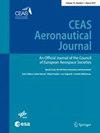Extended reality (xR) flight simulators as an adjunct to traditional flight training methods: a scoping review
Q2 Engineering
引用次数: 0
Abstract
Abstract Over the next 20 years, it is predicted that an additional 760,000 new pilots will be needed to meet the growing demands of the global aviation industry. With current training capability, this may be difficult to achieve. A potential means of improving the efficiency and lowering the cost of flight training, which arguably may be prohibitively expensive to many potential trainee pilots, is to use extended reality simulation in place of traditional flight simulators and aircraft for at least some of the required training. To provide a better understanding of the possibilities in this regard, and where current research has advanced, a scoping review was undertaken. In total, 18 studies were identified as meeting the inclusion criteria. It was concluded that extended reality technology has the potential to be successfully employed in flight training—saving time and money, whilst also enabling increased training capability, although some potential limitations were identified. The interest in this technology, combined with evidence pointing to its potential usefulness in flight training, suggests that further examination in this area by academia and industry is warranted.扩展现实(xR)飞行模拟器作为传统飞行训练方法的辅助:范围审查
据预测,在未来20年,全球航空业将需要76万名新飞行员来满足日益增长的需求。以目前的培训能力,这可能很难实现。提高飞行训练效率和降低飞行训练成本的一种潜在手段是使用扩展现实模拟来代替传统的飞行模拟器和飞机,至少在某些必要的训练中,这可能对许多潜在的见习飞行员来说过于昂贵。为了更好地了解这方面的可能性,以及在目前的研究取得进展的地方,进行了范围审查。总共有18项研究符合纳入标准。结论是,扩展现实技术具有成功应用于飞行训练的潜力——节省时间和金钱,同时也提高了训练能力,尽管确定了一些潜在的限制。对这项技术的兴趣,加上证据表明其在飞行训练中的潜在用途,表明学术界和工业界在这一领域的进一步研究是有必要的。
本文章由计算机程序翻译,如有差异,请以英文原文为准。
求助全文
约1分钟内获得全文
求助全文
来源期刊

CEAS Aeronautical Journal
Engineering-Aerospace Engineering
CiteScore
3.40
自引率
0.00%
发文量
53
期刊介绍:
The CEAS Aeronautical Journal has been created under the umbrella of CEAS to provide an appropriate platform for excellent scientific publications submitted by scientists and engineers. The German Aerospace Center (DLR) and the European Space Agency (ESA) support the Journal.The Journal is devoted to publishing results and findings in all areas of aeronautics-related science and technology as well as reports on new developments in design and manufacturing of aircraft, rotorcraft, and unmanned aerial vehicles. Of interest are also (invited) in-depth reviews of the status of development in specific areas of relevance to aeronautics, and descriptions of the potential way forward. Typical disciplines of interest include flight physics and aerodynamics, aeroelasticity and structural mechanics, aeroacoustics, structures and materials, flight mechanics and flight control, systems, flight guidance, air traffic management, communication, navigation and surveillance, aircraft and aircraft design, rotorcraft and propulsion.The Journal publishes peer-reviewed original articles, (invited) reviews and short communications.
 求助内容:
求助内容: 应助结果提醒方式:
应助结果提醒方式:


